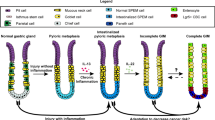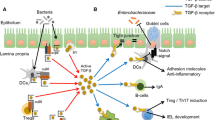Abstract
Arylsulfatase B (ASB; N-acetylgalactosamine-4-sulfatase; 4-sulfatase; ARSB) is the enzyme that removes 4-sulfate groups from N-acetylgalactosamine 4-sulfate, which combines with glucuronate to form the disaccharide unit of chondroitin-4-sulfate (C4S). In this study, we report how variation in expression of ASB affected the migration of human colonic epithelial cells. In the T84 cell line, derived from lung metastasis of malignant colonic epithelial cells, the activity of ASB, as well as steroid sulfatase, arylsulfatase A, and galactose-6-sulfatase, were significantly less than in normal, primary colonic epithelial cells and in the NCM460 cell line which was derived from normal colonocytes. In the T84 cells, matrix metalloproteinase 9 (MMP9), activated RhoA, and cell migration, as well as C4S content, were significantly more than in the NCM460 cells. Silencing and overexpression of ASB had inverse effects on MMP9, activated RhoA, and cell migration, as well as the C4S content, in the NCM460 and T84 cells. When ASB expression was silenced by siRNA in the NCM460 cells, MMP9 secretion increased to over 3 times the basal level, activated RhoA increased ~85%, and cell migration increased ~52%. Following overexpression of ASB, MMP9 declined 51%, activated RhoA declined ~51%, and cell migration decreased ~37%. These findings demonstrate marked effects of ASB expression on the migratory activity of colonic epithelial cells, activated RhoA, and MMP9, and suggest a potential vital role of ASB, due to its impact on chondroitin sulfation, on determination of the invasive phenotype of colonic epithelial cells.





Similar content being viewed by others
Abbreviations
- ASA:
-
Arylsulfatase A
- ASB:
-
Arylsulfatase B, N-acetylgalactosamine-4-sulfatase; 4-sulfatase
- C4S:
-
Chondroitin-4-sulfate
- CS:
-
Chondroitin sulfate
- DS:
-
Dermatan sulfate
- GAG:
-
Glycosaminoglycan
- GALNS:
-
Galactose-6-sulfatase
- IDS:
-
Iduronate sulfatase
- MMP9:
-
Matrix metalloproteinase 9
- PCEC:
-
Primary colonic epithelial cells
- STS:
-
Steroid sulfatase
References
Beratis NG, Turner BM, Weiss R, Hirschhorn K (1975) ASB deficiency in Maroteaux–Lamy Syndrome: cellular studies and carrier identification. Pediatr Res 9:475–480. doi:10.1203/00006450-197505000-00003
Bhattacharyya S, Tobacman JK (2007) Steroid sulfatase, arylsulfatases A and B, galactose 6-sulfatase, and iduronate sulfatase in mammary cells and effects of sulfated and non-sulfated estrogens on sulfatase activity. J Steroid Biochem Mol Biol 103:20–34. doi:10.1016/j.jsbmb.2006.08.002
Bhattacharyya S, Kotlo K, Shukla S, Danziger RS, Tobacman JK (2008) Distinct effects of N-acetylgalactosamine-ASB and galactose-6-sulfatase expression on chondroitin sulfates. J Biol Chem 283:9523–9530. doi:10.1074/jbc.M707967200
Bhattacharyya S, Look D, Tobacman JK (2007) Increased ASB activity in cystic fibrosis cells following correction of CFTR. Clin Chim Acta 380:122–127. doi:10.1016/j.cca.2007.01.021
Ferrero GB, Pagliardini S, Veljkovic A, Porta F, Bena C, Tardivo I, Restagno G, Silengo MC, Bignamini E (2008) In vivo specific reduction of ASB enzymatic activity in children with cystic fibrosis. Mol Genet Metab 94:39. doi:10.1016/j.ymgme.2007.10.010
Abécassis I, Olofsson B, Schmid M, Zalcman G, Karniguian A (2003) RhoA induces MMP-9 expression at CD44 lamellipodial focal complexes and promotes HMEC-1 cell invasion. Exp Cell Res 291(2):363–376. doi:10.1016/j.yexcr.2003.08.006
Turchi L, Chassot AA, Bourget I, Baldescchi C, Ortonne JP, Menyuzzi G, Lemichez E, Ponzio G (2003) Cross-talk between Rho GTPases and stress activated kinases for matrix metalloproteinase-9 induction in response to keratinocytes injury. J Invest Dermatol 121(6):1291–1300. doi:10.1111/j.1523-1747.2003.12627.x
Turner NA, O’Regan DJ, Ball SG, Porter KE (2005) Simvastatin inhibits MMP-9 secretion from human saphenous vein smooth muscle cells by inhibiting the RhoA/ROCK pathway and reducing MMP-9 mRNA levels. FASEB J 19(7):804–806
Moyer MP, Manzano LA, Merriman RL, Stauffer JS, Tanzer LR (1996) NCM460, a normal human colon mucosal epithelial cell line. In Vitro Cell Dev Biol Anim 32:315–317. doi:10.1007/BF02722955
Borthakur A, Bhattacharyya S, Dudeja PK, Tobacman JK (2007) Carrageenan induces Interleukin-8 production through distinct Bcl10 pathway in normal human colonic epithelial cells. Am J Physiol Gastrointest Liver Physiol 292:G829–G838. doi:10.1152/ajpgi.00380.2006
Blyscan™ GLYCOSAMINOGLYCANS assay. Biocolor Ltd. Manual. www.biocolor.co.uk/manuals/blyscan.pdf
Uchisawa H, Okuzaki B, Ichita J, Matsue H (2001) Binding between calcium ions and chondroitin sulfate chains of salmon nasal cartilage glycosaminoglycan. Intern Congr Ser 1223:205–220. doi:10.1016/S0531-5131(01)00458-7
Catlow KR, Deakin JA, Wei Z, Delehedde M, Fernig DG, Gherardi E, Gallagher JT, Pavão MS, Lyon M (2008) Interactions of hepatocyte growth factor/scatter factor with various glycosaminoglcyans reveal an important interplay between the presence of iduronate and sulfate density. J Biol Chem 283:5235–5248. doi:10.1074/jbc.M706589200
Samarin SN, Ivanov AI, Flatau G, Parkos CA, Nusrat A (2007) Rho/Rho-associated kinase-II signaling mediates disruption of epithelial–apical junctions. Mol Biol Cell 18:3429–3439. doi:10.1091/mbc.E07-04-0315
Leve F, De Souza W, Morgado-Diaz JA (2008) A cross-link between PKA and Rho-family GTPases signaling mediates cell–cell adhesion and actin cytoskeleton organization in epithelial cancer cells. J Pharmacol Exp Ther 327(3):777–788. doi:10.1124/jpet.108.140798
Vega FM, Ridley AJ (2008) Rho GTPases in cancer cell biology. FEBS Lett 582:2093–2101. doi:10.1016/j.febslet.2008.04.039
Frame MC, Brunton VG (2002) Advances in Rho-dependent actin regulation and oncogenic transformation. Curr Opin Genet Dev 12:36–43. doi:10.1016/S0959-437X(01)00261-1
Weinreb PH, Simon KJ, Rayhorn P, Yang WJ, Leone DR, Dolinski BM, Pearse BR, Yokota Y, Kawakatsu H, Atakilit A, Sheppard D, Violette SM (2004) Function-blocking integrin alphavbeta6 monoclonal antibodies: distinct ligand-mimetic and nonligand-mimetic classes. J Biol Chem 279:17875–17887. doi:10.1074/jbc.M312103200
Kauf AC, Hough SM, Bowditch RD (2001) Recognition of fibronectin by the platelet integrin alpha IIb beta 3 involves an extended interface with multiple electrostatic interactions. Biochemistry 40:9159–9166. doi:10.1021/bi010503x
Iida J, Wilhelmson KL, Ng J, Lee P, Morrison C, Tam E, Overall CM (2007) Cell surface chondroitin sulfate glycosaminoglycan in melanoma: role in the activation of pro-MMP-2 (pro-gelatinase A). Biochem J 403:553–563. doi:10.1042/BJ20061176
Hsu J-YC, Mourguignon LYW, Adams CM, Peyrollier K, Zhang H, Fandel T, Cun CL, Werb Z, Noble-Haeusslein LJ (2008) Matrix metalloproteinase-9 facilitates glial scar formation in the injured spinal cord. J Neurosci 28(50):13467–13477. doi:10.1523/JNEUROSCI.2287-08.2008
Wang H, Katagiri Y, McCann TE, Unsworth E, Goldsmith P, Yu ZX, Tan F, Santiago L, Mills EM, Wang Y, Symes AJ, Geller HM (2008) Chondroitin-4-sulfation negatively regulates axonal guidance and growth. J Cell Sci 121(Pt 18):3083–3091. doi:10.1242/jcs.032649
van der Flier A, Sonnenberg A (2001) Function and interactions of integrins. Cell Tissue Res 305:285–298. doi:10.1007/s004410100417
Fidler IJ (2003) The pathogenesis of cancer metastasis: the ‘seed and soil’ hypothesis revisited. Nat Rev Cancer 3:453–458. doi:10.1038/nrc1098
Acknowledgments
The authors acknowledge the contributions of Kumar Kotlo, Ph.D. with gene overexpression, Lu Leach, M.S. with immunohistochemistry, Sangeeta Tyagi, M.S., Ravinder Gill, Ph.D., and Mei Ling Chen, M.D. with confocal microscopy.
Author information
Authors and Affiliations
Corresponding author
Rights and permissions
About this article
Cite this article
Bhattacharyya, S., Tobacman, J.K. Arylsulfatase B regulates colonic epithelial cell migration by effects on MMP9 expression and RhoA activation. Clin Exp Metastasis 26, 535–545 (2009). https://doi.org/10.1007/s10585-009-9253-z
Received:
Accepted:
Published:
Issue Date:
DOI: https://doi.org/10.1007/s10585-009-9253-z




